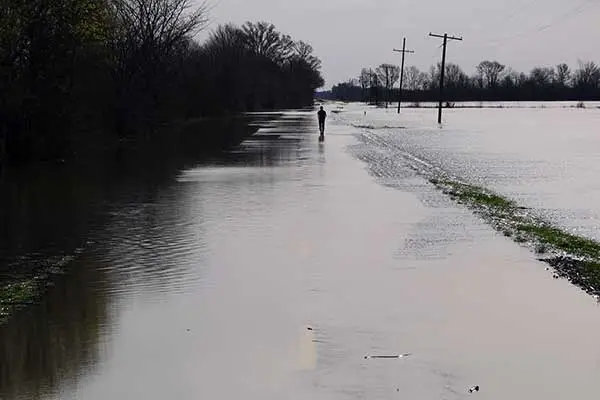
The state of Nebraska is quite diversified when it comes to agriculture commodities. Cattle production makes up the largest sector, with farms and ranches across the state utilizing 92% of the states total land area (44.9 million acres). From the first ranch in Nebraska to the largest, proper utilization of grass, water and grain is key to production.
In 2019, beef production led in revenue of all commodities produced statewide. Across Nebraska, cattle turn grass and other feed stuffs, into the most efficient protein source for consumers all over the world.
|
1/1/21 Total Cattle and Calves
|
Number on Feed
|
Total 2021 Meat Production
|
|
6,850,000
2nd in the nation
|
2,720,000
|
7,910,900,000 pounds
|
The first ranch in Nebraska was the Miles Ranch in Dawson Nebraska founded in 1855 and covered 42,000 acres. Today, cattle are located across the state utilizing 22 million acres of rangeland and pastureland. According to The USDA’s National Agricultural Statistics Service, there are 45,700 ranches and farms in the state of Nebraska. The average size of a ranch is 908 acres
Half of today’s 22 million acres is in the Sandhills in north central Nebraska and north of the Platte River. In this region, it takes around 15 acres per cow/calf pair per grazing season with supplemental feed during the winter months. The number of acres needed to sustain a cow/calf pair ranges from 18 acres in far western Nebraska to 5 acres in the eastern part of the state.
Most of Nebraska is rolling hills with significant elevation change. The eastern part of the state starts at approximately 1,085 feet above sea level and going to the west the elevation changes by 4,584 feet. Compared to crop acres, the grasslands, are a little more than half the land, that is located on soils that are not currently suitable for growing row crops, for now they will remain for the production of livestock.
About 8.6 million acres out of 20 million acres of Nebraska’s tillable soil is irrigated, creating the most irrigated acres in the nation. This provides a reliable source of feed to mitigate the risk of raising livestock on the open rangeland and provides some of the best finished beef in the nation. Rotation of cattle from the pasture to corn stalks after harvest is common and provides continued free-range grazing while cleaning up any grain left behind after harvest. Grazing rates on corn stalks run in a range of $10 to $15 dollars per acre on irrigated acres.
Nebraska is also home innovation on the consumer level. Research from Chris Calkins, Animal Science Professor at the University of Nebraska, brought us the flatiron steak. This cut comes from the top of the chuck, which is part of the shoulder and is a tender cut of meat priced less than other steaks.
Peoples Company Land Managers are trained in a variety of agriculture commodities and the best practices of the region they work. To learn more about consulting and management services available in your area, contact Peoples Company Land Management at landmanagement@peoplescompany.com or visit our website www.PeoplesCompany.com.







